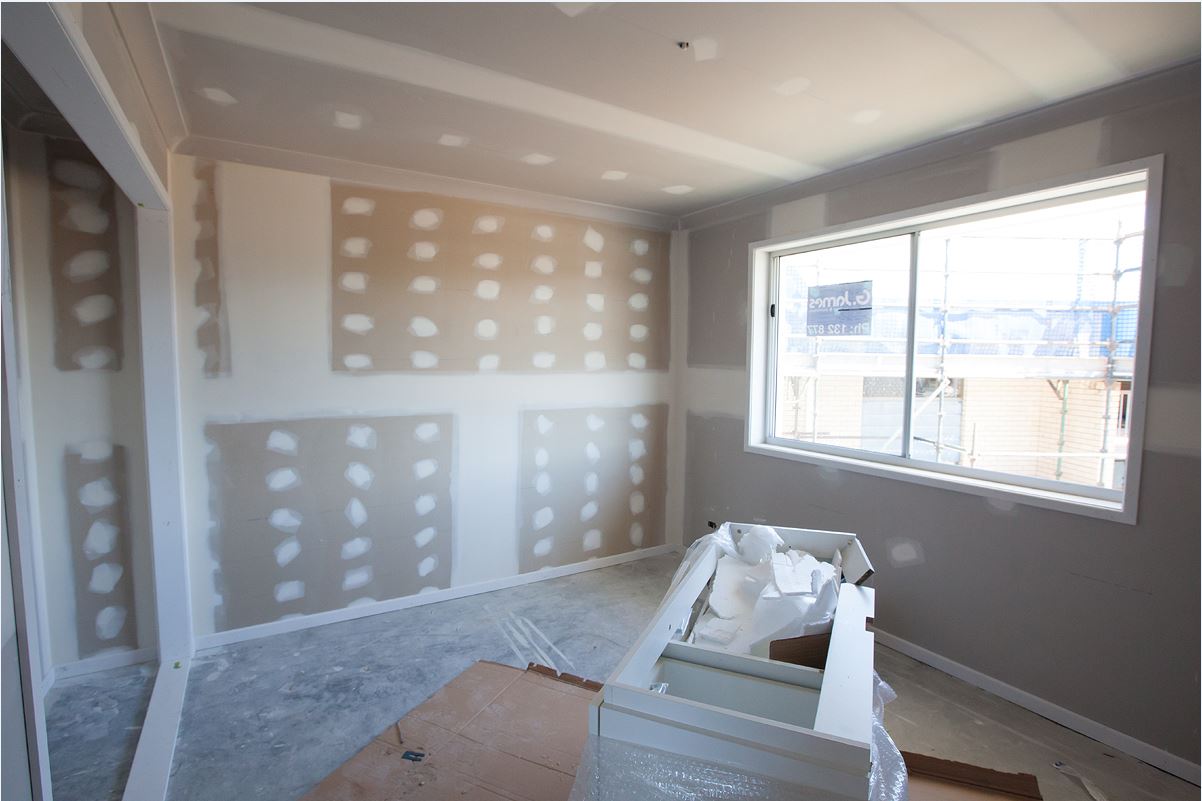
At times we get asked why we strip out to 1200mm (or the nearest horizontal joint) rather than lower down where the damage finishes.
 Both the QBCC and the Association of Call and Ceiling Industries (AWCI) state that plasterboard should be taken to the nearest joint above the inundation level, being either 1200mm, 1350mm or full height.
Both the QBCC and the Association of Call and Ceiling Industries (AWCI) state that plasterboard should be taken to the nearest joint above the inundation level, being either 1200mm, 1350mm or full height.
With a Class 4 finish required in all standard domestic plaster works, removing it to the nearest horizontal joint allows the plasterer to manage this as a recessed joint, rather than a butt joint that would occur if cut lower down.
Level 4: The standard level of finish for plasterboard lining where normal decoration by painting is to be carried out. Unless otherwise specified, a level 4 finish shall be taken as the default standard level of finish for plasterboard (as defined in AS/NZS 2589 (2007).
Jointing is the process of covering and reinforcing the join between sheets to give a flush, seamless appearance. Paper tape is embedded into compound, then covered with two or more layers of compound spread wide to each side of the joint.
When joined at the manufactured sheet edge, there is a recess in the board allowing the join to be filled with less protrusion. When the board is cut and the edges of the sheet “butted” together this is to be treated as a butt joint.
When sheeting is installed next to a square or cut edge, such when a board is stripped out to an existing horizontal join, this requires the plasterer to treat this joint as a “butt” joint.
A butt joint is required to be set over a 500mm wide coat as per AS: 2589:2007. A standard recessed coat is only 250mm wide. See figure below:

To achieve a better finish Ambrose Construct Group trades will often grind the plaster from the recess joint on the top (existing sheet) to provide a recess as this only requires a 250mm wide coat, effectively halving the setting labour required for a butt joint which requires 500mm final coat.
For further information refer to:
AWCI – PLASTERBOARD RECTIFICATION RESULTING FROM FLOOD INUNDATION, 2017